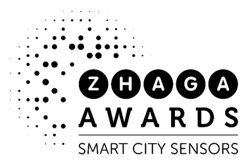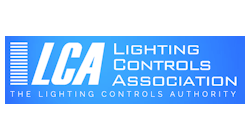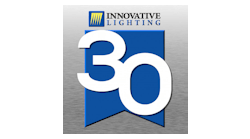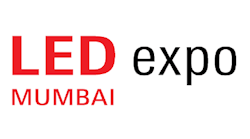The awards recognize excellence in smart city sensors designed to be installed on streetlights using the Zhaga Book 18 standard and that are suitable for Zhaga-D4i certification.
Piscataway, NJ, USA (18 April 2023) – Zhaga, the global lighting industry consortium with the mission of standardizing the interfaces of components of LED luminaires, announced the winners of its inaugural Smart City Sensor Awards on 13 April.
Launched in September 2022, the awards aim to encourage and recognize excellence in smart city sensors. The global contest was open to any smart city sensors that can be installed on streetlights using the Zhaga Book 18 standard and that are suitable for Zhaga-D4i certification.
Book 18 is Zhaga’s specification of the smart interface between outdoor luminaires and sensing/ communication modules. D4i is an extension of the DALI-2 certification program. D4i LED drivers have a mandatory set of features related to power-supply requirements and smart-data capabilities.
“When it comes to smart city sensing tasks, nothing beats the streetlight,” said Francesco Martini, chair of the Zhaga Steering Committee, who made his remarks during a virtual awards ceremony held 13 April. “Already ubiquitous in most cities, the streetlight not only offers a strategic location for smart sensors, it’s also a secure piece of powered infrastructure available at a low cost.”
“Zhaga Book 18 is a universal platform for streetlighting connectivity, allowing streetlights to be the backbone of the smart city revolution,” added Francesco Martini. “Each of our Smart City Sensor Award winners exemplify the innovations that are driving this revolution.”
And the Winners Are…
Judged by a panel of smart city and sensor experts, including city officials, utility companies and industry associations, the jury evaluated qualifying submissions from sensor manufacturers. After careful consideration, the jury made awards in four categories.
A Game-Changing Sensor to Measure Traffic Density and Patterns
In the Mobility category, which includes solutions for counting vehicles, bicycles and pedestrian traffic and/or measuring vehicle speed, the award went to global lighting technology supplier TRIDONIC and its SensorX concept.
Based on the Zhaga-D4i standard, this game-changing CMOS image sensor is designed to accurately measure traffic density and patterns in real time, providing data that urban planners can use to mitigate road congestion. The sensor can also recognize different road users. For example, when it detects a pedestrian crossing the street, the sensor can send commands to adjacent luminaires to raise lighting levels.
An Innovative Motion Sensor and a Versatile All-in-One Outdoor Luminaire Controller
The jury named a winner in the Adaptive Lighting Control category – a category that includes motion detection and other sensors that control lighting levels.
TE Connectivity, an American-Swiss company that designs and manufacturers sensor and connectivity solutions, was awarded for its LUMAWISE Motion Sensor. The innovative motion sensor was designed specifically for street lighting and can fit into the Zhaga-D4i ecosystem. The pluggable device enables energy savings by dimming or even turning off a luminaire without compromising safety and security. When it detects motion, it then brings the luminaire back to full brightness.
A crossover between Adaptive Lighting Control and Multi Sensor awarded for Innovation category
Citilight, which designs smart IoT luminaire controllers, was awarded for its CNODE IOT AMR sensor. The versatile and convenient all-in-one outdoor luminaire controller provides advanced lighting control for a range of outdoor lighting applications and also includes motion sensing and inclination sensing capabilities. It also supports the Wireless MBus 868MHz OMS automated meter reading protocol, allowing utility companies to simultaneously read various utility meters from up to 600m of the luminaire controller.
An Outdoor Multi Sensor to Support Different Smart City Applications
In the Multi Sensor category, which covers sensors that combine two or more functionalities, the award went to Signify for its Philips Outdoor Multi Sensor (OMS) LRI8135. The OMS connects to streetlight luminaires via the Zhaga Book 18 (edition 3) socket interface.
Intended for use in Zhaga-D4i certified outdoor luminaires, the OMS includes several sensors to support different smart city applications. For example, it can serve as a radar motion sensor to automatically increase light levels in response to motion, as a light sensor to enable dusk-to-dawn operations, or as noise and temperature sensors to monitor ambient conditions near the light pole. When grouped via a local mesh radio network, the OMS can increase the light level of a group of luminaires. It also features tilt and impact sensors for reporting potentially unsafe light pole conditions.
Defining the Smart City of Tomorrow
Each winner was presented with a digital banner badge and will receive public recognition of their award-winning product or concept.
“Not only do these Zhaga Smart City Sensor Awards winners celebrate the innovative solutions on the market today, they also challenge other manufacturers, innovators and researchers to create the next generation of sensors that will define the smart city of tomorrow,” concluded Francesco Martini.
For more information on the Zhaga Smart City Sensor Awards winners, please visit https://www.zhagastandard.org/zhaga-smartcitysensor-awards.html/#Winners or contact Axel Baschnagel at [email protected].
About Zhaga
Zhaga is a global association of lighting industry members. Zhaga standardizes interface specifications for LED luminaire components, including LED light engines, LED modules, LED arrays, holders, electronic control gear (LED drivers), connectors, sensor and/or wireless communication modules and associated devices. The Zhaga interface standards enable multi-vendor ecosystem of interoperable products. To create trust in the interoperability of products from multiple vendors Zhaga has a certification and logo-program executed by third party test houses. Through its focus on interoperability, Zhaga contributes to circularity lighting via smart, connected lighting and serviceable luminaires, supporting the UN Sustainable Development Goal 11 for sustainable cities and communities. Zhaga has set up a partner and liaison program, working with recognized Standards Development Organizations and Alliances to maximize synergies, leverage external expertise and global acceptance. For more information, visit www.zhagastandard.org.





